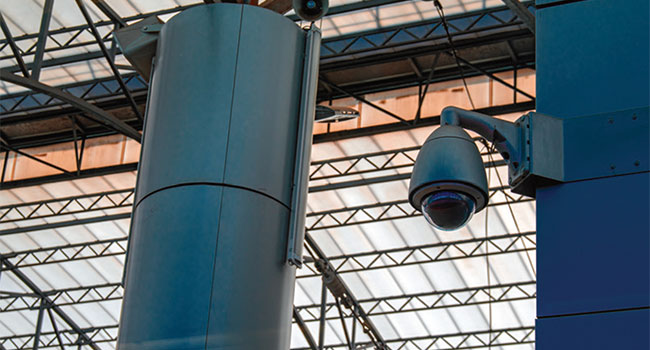
Progressing in Capabilities
Explosion-protected cameras are becoming more affordable
- By Joe Morgan
- Mar 24, 2023
Hazardous areas within industries like oil and gas, manufacturing, agriculture and the like, have long-sought reliable video surveillance cameras and equipment that can operate safely in these harsh and unpredictable environments. After all, the flammable materials often used in these production processes – if introduced to the right ignition source like a seemingly minute inner electrical spark from a video surveillance camera – could result in a damaging or even deadly explosion
Security manufacturers have progressed in developing durable enclosures that allow video surveillance cameras to function safely in these environments without exposure to hazardous materials. The industry has progressed so much that these hazardous environments can now obtain crisp video for security and investigations, and they can leverage advanced technology in video surveillance – like video analytics and machine learning – to improve security as well as operational efficiency.
When it comes to Preventing Explosions, One Size Does not fit all for Cameras and Enclosures
As companies began to incorporate video surveillance in hazardous environments, they sought camera enclosures, often from a third party, to fit an existing camera line. This often resulted in a vulnerability if the housing were a one size fits all, it likely would not live up to standards and not be safely used.
Fortunately, the industry has improved explosion-protected cameras by designing accompanying enclosures developed specifically for these hazardous areas. Explosion-protected camera enclosures must be made to fit the camera and not the other way around. The enclosure should never limit what is possible with an explosion-protected camera because it is an integral part of the solution.
The evolution of explosion-protected cameras does not stop with specially designed enclosures. Some innovative manufactures are redesigning explosion-protected cameras to fit in more areas at a reduced cost by integrating the casing into the camera’s design. This lighter and less expensive option are opening new possibilities in these hazardous environments.
Properly designed and fitted enclosures and explosion-protected cameras must adhere to the standards set forth by the National Electric Code (NEC), the National Fire Protection Association (NFPA), and Underwriters Laboratories (UL) and their Class and Division regulations.
Regulations that pertain to hazardous areas include Class 1, Division 1, and Class 1, Division 2. Video cameras, including housings, that are Class 1 and Division 1 and 2 are certified to operate in areas where gases, vapors or liquids may exist that have the potential to become flammable or ignitable such as in petroleum refineries, gasoline storage areas, dry cleaning plants, spray finishing areas and fuel servicing areas.
Leverage Video Technology in Hazardous Areas to Improve Operational Efficiency
It has been exciting to watch critical infrastructure and hazardous environments make use of the invaluable data that today’s video surveillance cameras have been delivering in a variety of industries already. In addition to providing better, further and brighter video for security, explosion-protected cameras can include analytics solutions that transform video, audio, and other data into valuable insights that can receive instant action.
AI can open the door to a stronger and faster conversion of data into triggered events that let users respond appropriately to security and safety breaches as they occur. AI is also be used to provide statistics and events that allow users to respond to what´s happening in operations and maximize performance and value. With video surveillance cameras that incorporate analytics and process data on the edge, this is accomplished without overtaxing network resources and valuable bandwidth.
The sensors and analytics used in today’s explosion-protected cameras can play an integral role in processes and operations. For example, when a control room receives a report that the pressure in a hazardous area is too high, instead of sending a person in and exposing them to a potentially hazardous area, they can now have an explosion-protected camera in the room. The camera user can zoom into the gauges to read pressure, and control can make adjustments from a far, avoiding the potential for danger.
Sensors can be set to evaluate flares at refineries to check to see if they are of the right size, color, or any other indicator that might warn of problems before they arise. This information will ensure they are operating in compliance with guidelines from regulatory agencies, such as EPA.
In addition to receiving more and better data collection, deep learning-enabled analytics directly in the cameras can help operators predict maintenance needs. Users can monitor piping and equipment overheating, and temperature changes. This can enable the optimization of operational performance and contribute to maximum uptime of critical equipment and processes.
Can you afford not To Implement?
As with most technology, wider adoption means pricing will come down, which has also been the case for explosion-protected cameras. Cameras that can operate in hazardous environments used to be $30,000. Prices per camera have dramatically decreased to just over $10,000 while functionality and performance have increased.
The same camera that monitors plant welfare and productivity patterns can also support safety and security protocols already in place. These multitasking capabilities could mean more flexibility and the deployment of fewer cameras, ensuring a more cost-effective investment. The addition of analytics and the ability to improve operational efficiency and prevent catastrophic accidents, which results in fewer potentially costly facility shutdowns, clean-ups or even lawsuits. This makes modern explosion-protected cameras a sound investment.
This article originally appeared in the March / April 2023 issue of Security Today.